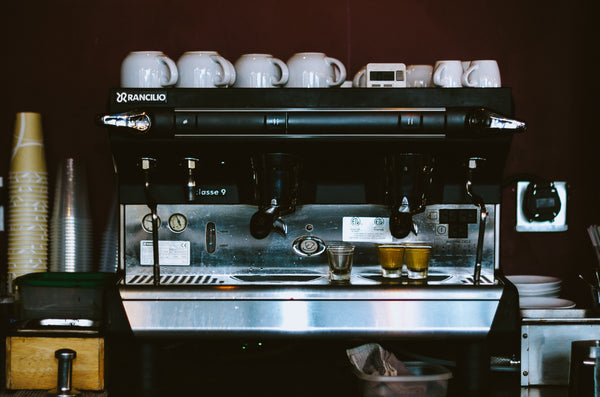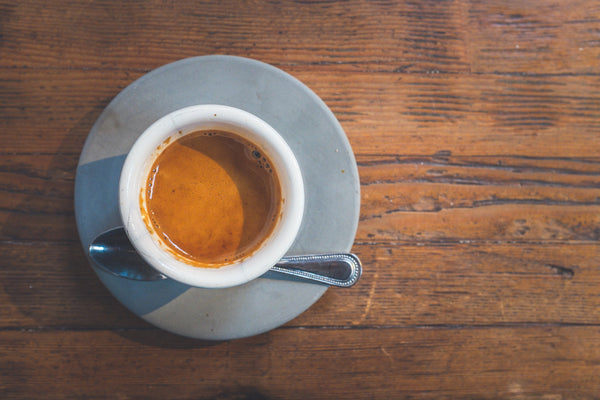Espresso: It's time to think outside the scale

"This was a liberation for me and for those I trained - a revolt to all my third wave barista friends who were chained to scales and timers. It was crazy and it worked."
This November marks my two years of being in the coffee industry. Thinking about my career and the things i've learned it's kind of interesting to see my pattern of growth. I have worked for three companies in the course of two years (which makes me sound like a loser) but in doing that I’ve seen so many ways of doing things that it has helped me rid myself of the “barista god complex”. By that I mean -- you will not likely hear me say there is only one way of doing anything.
My first gig was at the first KC location of Kaldi’s Coffee (formerly Latte Land). In my first two weeks I would be making smoothies and handing out cookies and occasionally look over at the trained baristas with longing as they pulled shots and steamed milk. I had been a coffee “fan” for years and saw the working of an espresso machine as this heroic task that only the most noble were able to achieve. One day, my trainer carefully decided to walk me through the art of pulling a shot. It involved a lot of scales and watches and it was narrowed down to a clockwork system that was controlled and calculated. And I bought into it.
About 8 months later I was helping out at a friend’s coffee bar at a church and was weighing and measuring out everything. This friend of mine (s/o Aaron Duckworth) had been in the coffee industry for maybe 15 years at least. Seattle native. Old school to say the least. This friend covered up the timer on the espresso machine. I panicked. “How can I know when to stop it?”, I stuttered out. He explained why he did that and we spent maybe the next thirty minutes dissecting the sensory approach to pulling espresso. The next day at Kaldi’s I hopped on bar like a newly resurrected hero, ready to enlighten the world on how to pull espresso shots. I smelled and examined the grounds, studied the extraction colors and movements, and I took time to understand what a good shot looked and smelled like and then I tasted it all without a timer or scale. This was a liberation for me and for those I trained - a revolt to all my third wave barista friends who were chained to scales and timers. It was crazy and it worked.
For me to explain how to do this would be like explaining how to paint or sing. Unless you and I pull shots together I might never be able to explain to you the beauty of not using scales in a scientific fashion. I believe it was the kind folks at Blue Bottle who said, “There is nothing mysterious about espresso, it's just really really hard.”
Consider this a call to action in two forms:
I often times get frustrated around some friends of mine who are gifted and learned painters. They criticize and analyze paintings, whereas I just know what looks good to me. I might not be able to argue for a paintings’ worth, but I know what I like. I know what paintings I like because I have two eyes and a heart. You should treat espresso the same way. You have two eyes, a perfectly adequate olfactory sense complete with one odor receptor, and a tongue with more taste buds than you can count. Your body is truly made and formed to know if things taste good or bad so why not use it? I understand you put 21 grams into the portafilter and 36 grams came out at 30 seconds and I’m sure you’re really proud of that. Did you taste it? Are you giving your customers something that you would drink yourself?
On the flip side of the coin, you can't build a house without tools. Once you begin pulling shots that taste good, you should (if time allows) measure out the perimeters of your shots. This does help you give yourself a “frame of reference” of where the shots “kind of” need to be...
Bear with me when I say, I question the true skill of a barista if the success or failure of an espresso shot is dependent upon the measurements and TDS reports.

At the end of the day you can only do what works best for you. You know the philosophy of your cafe and the drinks that go with that. But isn't it so fun to challenge yourself? I think about when I was a kid, at the neighborhood pool, one day I decided to go off the high dive instead of the four foot diving board. As hard as going off that high dive was it was so rewarding when I popped up out of the water. Never be content with where your skills are at as a barista. You can always make better drinks. Just trust your senses, you have more knowledge of extraction than you think.
Hopefully I’ll be able to taste these wild and free shots of yours one day.
-- Montana


